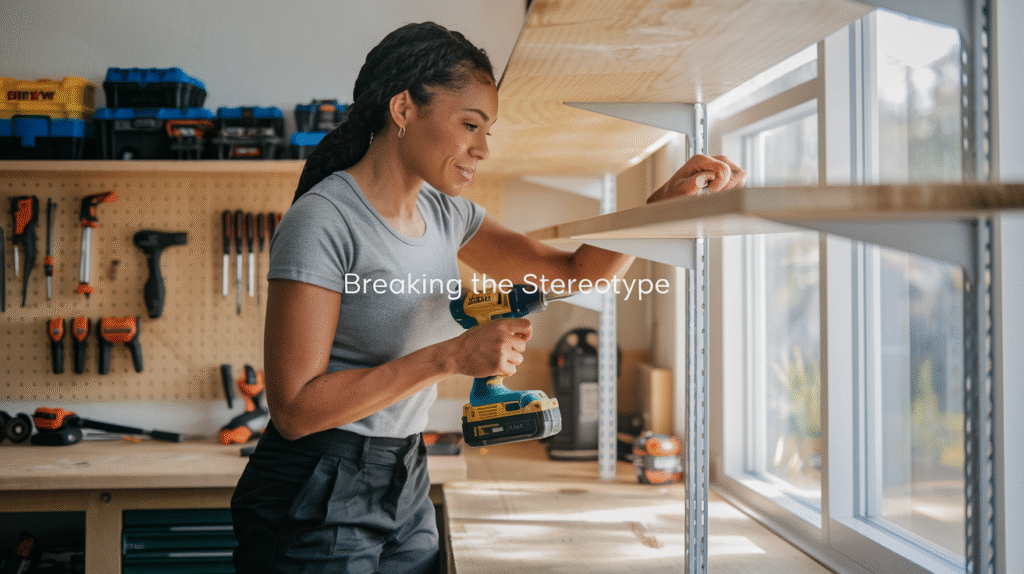
Remember that time your dad told you to “find a man who’s good with tools”? Well, plot twist: you became that person.
A silent revolution is happening in homes across America. Women aren’t just calling the shots on décor anymore—they’re wielding the hammers, operating the drills, and mastering DIY home repair like never.
The rising trend of women taking charge of home repairs isn’t just breaking stereotypes—it’s rebuilding them from the ground up. From simple fixes to major renovations, more women are skipping the contractor calls and grabbing their toolboxes instead.
But here’s what nobody’s talking about: what exactly triggered this massive shift in who fixes what around the house, and why are so many women finding unexpected satisfaction with a power tool in hand?
The Rise of Women in Home Repairs
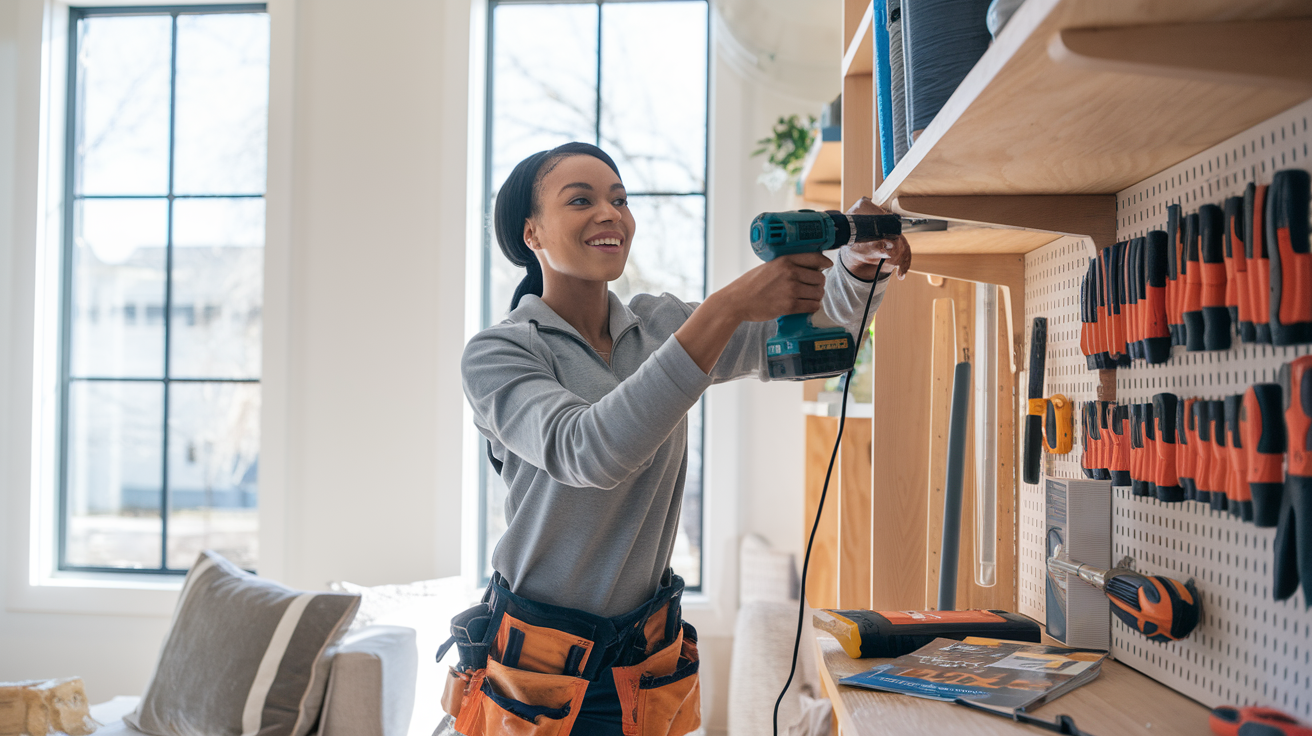
Statistics showing the increasing trend
Gone are the days when fixing a leaky faucet was “man’s work.” Recent surveys show that 55% of women now handle home repairs themselves, up from just 32% a decade ago. Home improvement retailers report that female customers buying power tools have jumped by 35% in the last five years.
What’s even more impressive? Women aren’t just tackling “light” repairs. A 2022 study found that 42% of women have completed electrical work, 38% have done plumbing repairs, and a whopping 65% have mastered furniture assembly with no help.
Social media’s role in showcasing female DIYers
Scroll through TikTok or Instagram and you’ll find thousands of women showing off their latest renovation projects. Hashtags like #WomenWhoBuilt and #FemaleDIY have millions of views, with content creators breaking down complex projects into bite-sized tutorials.
These platforms have created communities where women share tips, celebrate wins, and troubleshoot together. Many female DIY influencers specifically mention how social media gave them the confidence to pick up that drill for the first time.
Economic factors driving self-sufficiency
Money talks. With the average service call costing $150 before any work begins, learning to DIY makes financial sense. Post-pandemic inflation has only strengthened this trend, with 73% of women citing saving money as their primary motivation for learning home repairs.
But it goes beyond immediate savings. Many women report feeling empowered by their new skills, with some turning weekend projects into side hustles or full-blown businesses. The economic independence that comes from not having to rely on expensive contractors or waiting for help is a powerful motivator that’s reshaping who holds the toolbox in American homes.
Debunking the “Not Mechanically Inclined” Myth
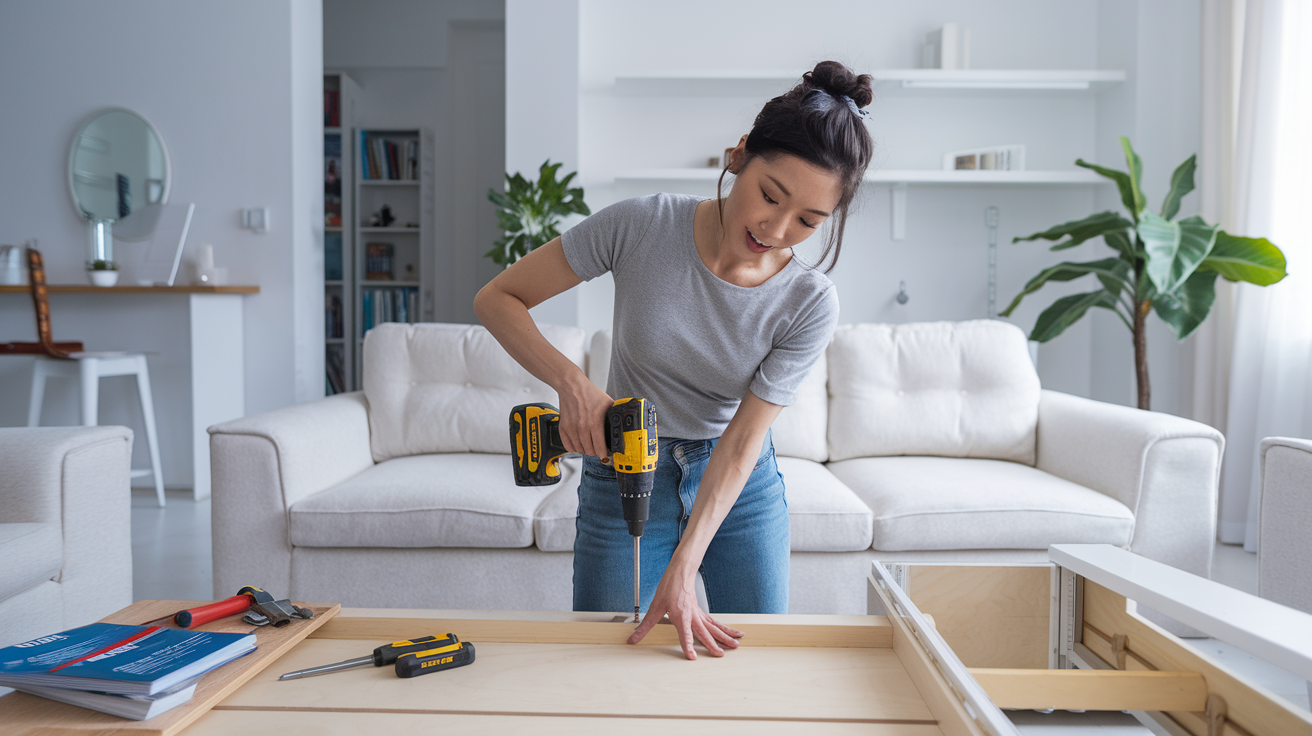
Ever heard that women just aren’t “wired” for mechanical tasks? Science has something to say about that. Recent studies show there’s virtually no inherent difference in spatial reasoning abilities between genders. What we’re seeing isn’t biology—it’s opportunity.
Stanford researchers found that when women receive the same exposure and practice with spatial tasks as men, the so-called “gender gap” in these skills disappears almost entirely. It’s not about brain structure—it’s about what we’ve been encouraged to attempt.
B. How traditional stereotypes developed
These myths didn’t appear from nowhere. People carefully constructed them over generations. Post-WWII America saw a deliberate push to get women out of factories and back into kitchens. Marketing campaigns suddenly portrayed tools as “masculine” while household cleaners became “feminine.”
The crazy part? Before this shift, many household repairs were traditionally women’s work. The gender division we think of as “traditional” is actually pretty recent.
C. Success stories of women in construction and trades
Women are crushing it in trades across the country. Take Emily Pilloton, founder of Girls Garage, who’s taught thousands of young women to use power tools and build structures from scratch.
Or Shannon Tymosko, an electrical apprentice who went viral, showing her daily work life on construction sites. Their success isn’t exceptional—it’s what happens when barriers come down.
D. The confidence gap versus the skill gap
The genuine issue isn’t ability—it’s confidence. Many women hesitate before grabbing a wrench not because they can’t use it, but because they’ve never been told they could.
When women take first DIY plunge, most discover they’re completely capable. The learning curve isn’t steeper for women—the mental hurdle is just higher because of years of “that’s not for you” messaging.
Tools and Resources Tailored for All Users
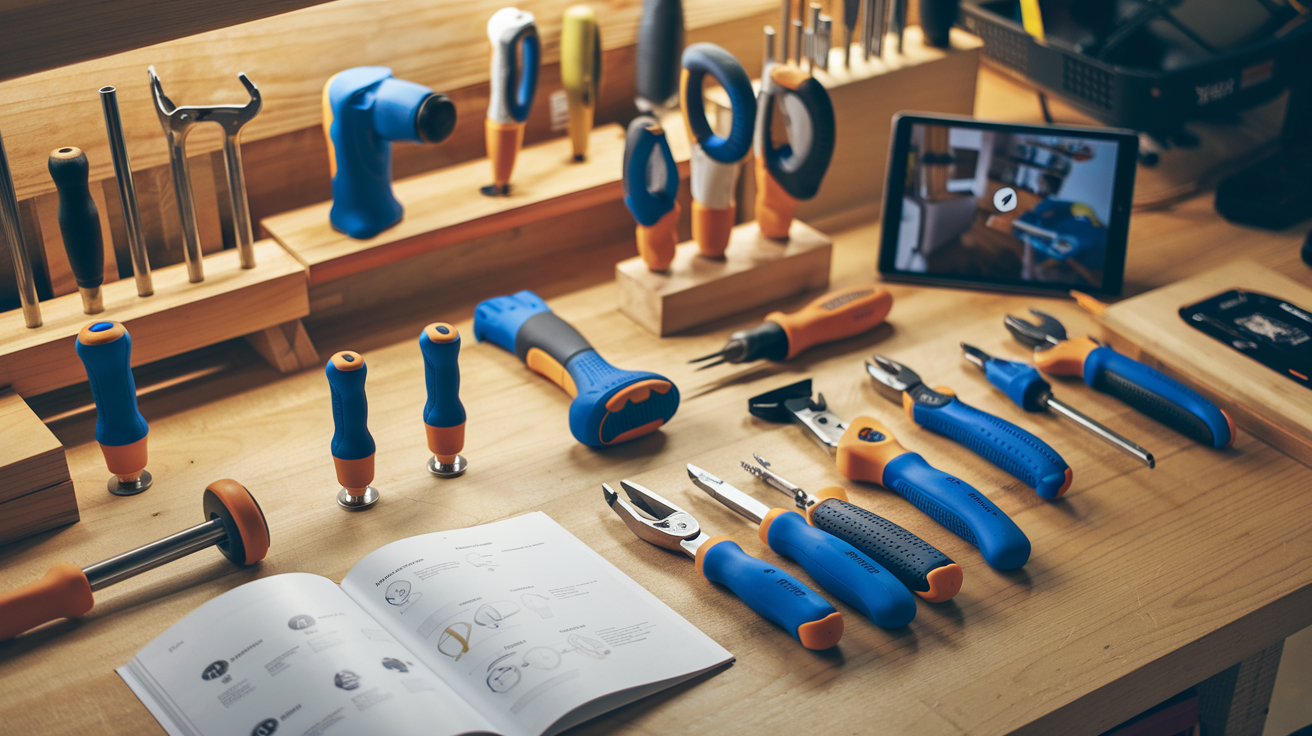
Gone are the days when tools were bulky contraptions that required brute strength. Today’s tools are smarter, more ergonomic, and designed with all users in mind.
Power tools have undergone a remarkable transformation. They’re lighter, feature soft-grip handles, and come with anti-vibration technology that makes them comfortable for anyone to use. Companies like DeWalt and Milwaukee have reimagined their product lines not by “pinking” tools for women, but by creating better tools that work for everyone.
Even the humble hammer has developed. Modern designs focus on balance and leverage rather than weight, allowing users to drive nails with proper technique instead of pure muscle.
What’s driving this change? Smart manufacturers realized that designing tools for all body types isn’t just inclusive—it’s good business.
Online learning platforms democratizing knowledge
YouTube has become the great equalizer in DIY education. Channels like “See Jane Drill” and “Home Renovation DIY” break down complex repairs into manageable steps anyone can follow.
Apps like DIY Ally and iFixit offer interactive guides tailored to different skill levels. Got a leaky faucet? There’s literally a step-by-step tutorial for that.
The beauty of these platforms is they don’t care who you are—just that you want to learn. They’ve removed the intimidation factor from home repairs and created space for everyone to build skills at their own pace.
Women-led workshops and communities
Women are creating their own spaces to share knowledge. Hardware stores like Home Depot now offer workshops specifically designed to build confidence in new DIYers.
Online communities like “Girls With Power Tools” and “DIY Divas” provide forums where women can ask questions without judgment and share their successes. These groups don’t just teach skills—they’re building a movement that says fixing things isn’t about gender, it’s about knowledge and determination.
Psychological Benefits of DIY Mastery
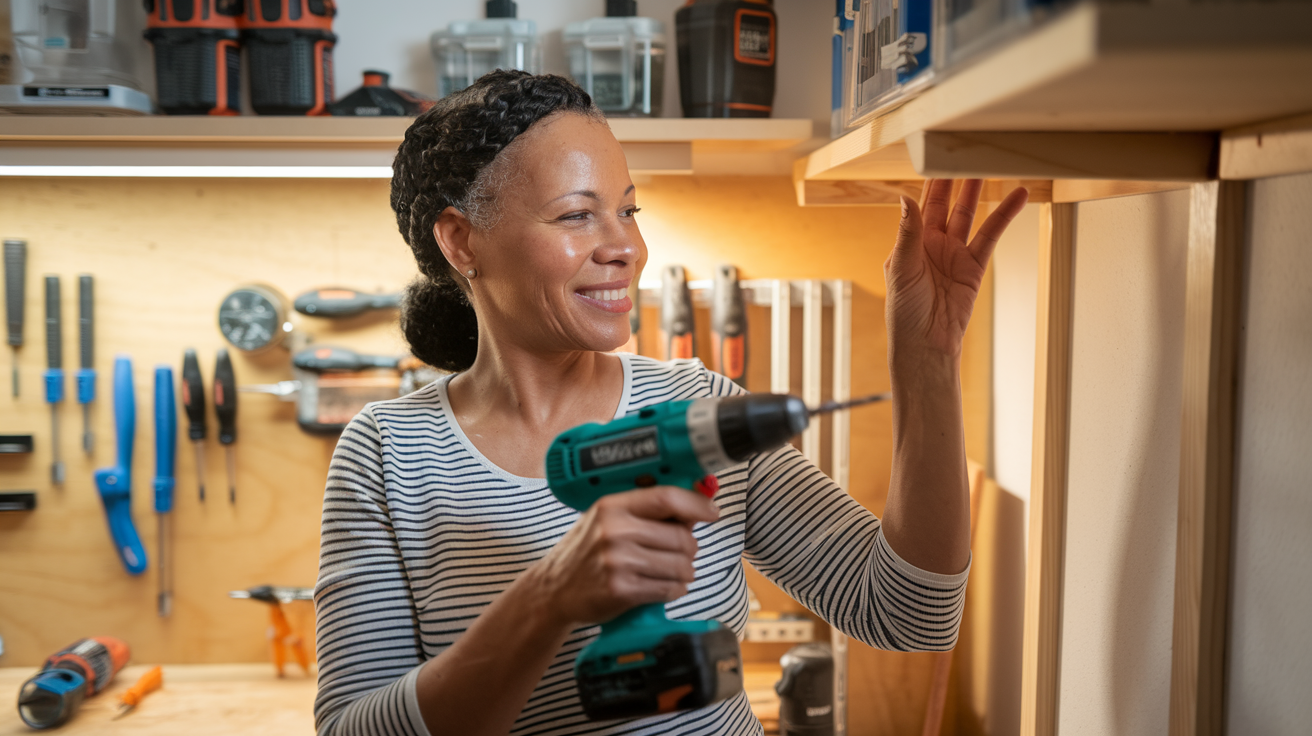
A. Empowerment through skill acquisition
Picking up a drill for the first time can feel intimidating. But watch what happens after you’ve successfully mounted that floating shelf all by yourself – there’s a fire that lights up inside.
Women who dive into DIY projects often report something transformative happening: they stop seeing themselves as “just not handy.” Instead, they become problem-solvers who can tackle whatever their home throws at them.
“I never thought I could replace a faucet,” says Lisa, a marketing executive who now renovates furniture on weekends. “Now I walk through my house seeing projects, not problems.”
This shift goes way beyond home repairs. The confidence from mastering tools and techniques spills into other areas of life. Women who can troubleshoot a circuit breaker often approach work challenges with the same methodical confidence.
B. Stress reduction and mindfulness in hands-on work
Ever notice how focusing on a detailed task makes everything else fade away? That’s exactly what happens during DIY projects.
Sanding wood, calculating, or carefully painting, requires total attention – forcing your brain to take a break from its usual worries. It’s meditation with a hammer.
The physical nature of repair work creates a natural outlet for pent-up stress. There’s something deeply satisfying about channeling frustration into productive action rather than letting it simmer inside.
C. Pride of ownership and accomplishment
Nothing beats the feeling of pointing to something in your home and saying, “I made that” or “I fixed that.”
When you’ve repaired the screen door that’s been sticking for months, you experience a special connection to your space. Your home becomes more than just where you live – it’s a showcase of your capabilities.
This sense of accomplishment isn’t fleeting either. Every time you walk past that perfectly installed tile backsplash or use that restored vintage chair, you get a little boost of satisfaction.
D. Building resilience through problem-solving
DIY projects rarely go exactly as planned. That’s actually where the magic happens.
When the pipe leaks, despite following the YouTube tutorial perfectly, or when the paint color looks nothing like you expected, you’re forced to adapt. Each setback becomes an opportunity to develop creative solutions.
Women who regularly tackle home projects build an incredible problem-solving toolkit. They learn to stay calm when things go sideways, to assess situations realistically, and to figure out workable alternatives.
This resilience becomes a superpower in daily life. After you’ve dealt with a flooded bathroom at midnight, that work presentation doesn’t seem so scary anymore.
The Economic Advantages of Self-Reliance
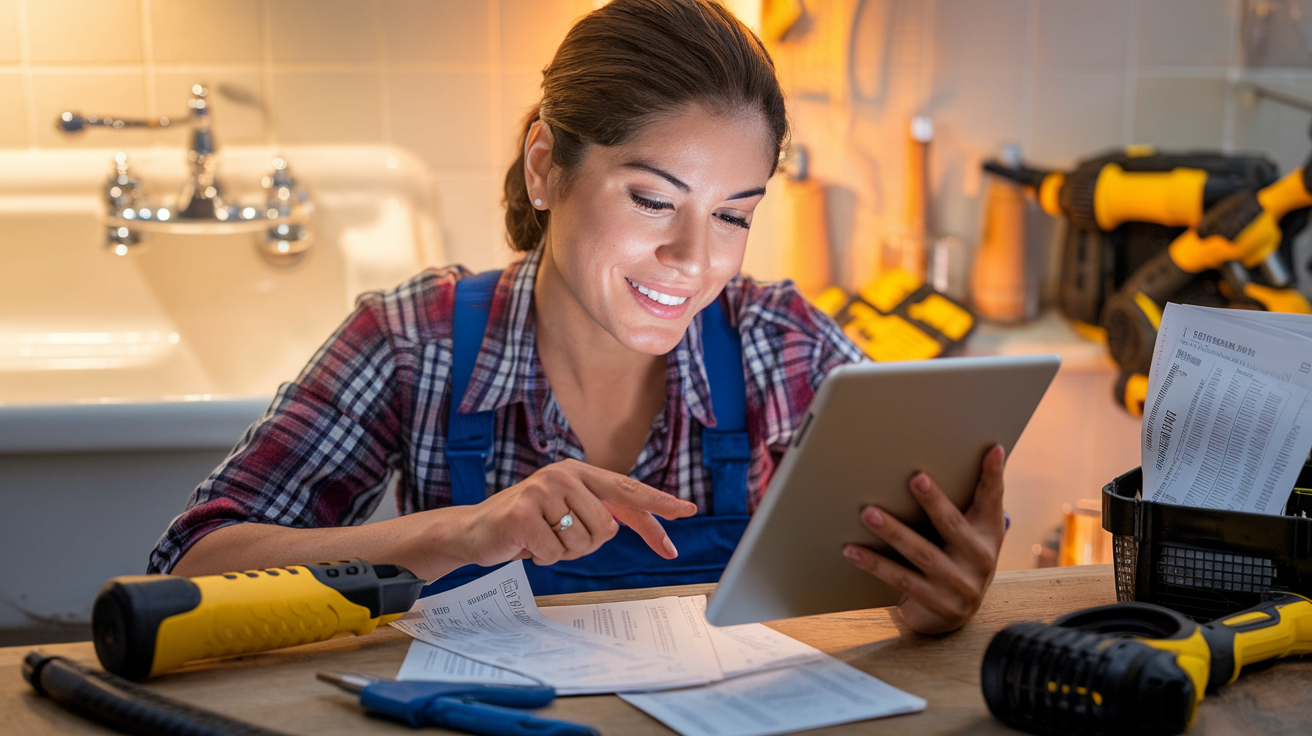
Think about the last time you called a plumber for a leaky faucet. $200 later, you realized they spent 15 minutes doing something you could’ve learned from YouTube.
That’s the financial reality women everywhere are waking up to. When you fix that running toilet yourself, you’re not just saving the $150 service call–you’re building skills that pay dividends for decades.
The numbers don’t lie. A basic bathroom renovation costs around $10,000 with contractors. Do the demo, painting, and fixture installation yourself, and you’re looking to save 30-50% instantly.
But it’s not just about the extensive projects. Those minor fixes add up:
Unclogging your own drain: $15 vs $120
Mounting your TV: $0 vs $100
Painting a room: $200 vs $600
B. Value added to property through improvements
Women who master DIY aren’t just saving money–they’re making it.
The kitchen backsplash you installed yourself? That $300 investment could return $1,000 in home value. The bathroom vanity you upgraded last weekend might recoup 80% of your costs immediately in property value.
Smart DIY improvements consistently rank among the highest ROI home investments. That deck you built with your own hands doesn’t just give you a place to drink coffee–it might add 5-10% to your home’s selling price.
C. Potential side hustles and income opportunities
Once you’ve mastered fixing your own stuff, an interesting thing happens–friends start asking for help.
Many women are turning weekend skills into profitable side hustles:
Furniture flipping (buy cheap, refinish, sell high)
Offering installation services
Teaching workshops for other beginners
Creating DIY content online
The woman who learned to tile her bathroom last year might run a small renovation business this year. Your knack for fixing things doesn’t just save money–it creates opportunities to make it.
Changing Family Dynamics

Modeling capability for children of all genders
When mom picks up a power drill instead of calling a handyman, something magical happens. Kids see capability as human, not gendered.
I watched my neighbor’s daughter’s eyes light up when she saw her mom replace their kitchen faucet. “I want to do that too!” she exclaimed. But here’s what really got me – her brother was just as impressed. They both learned that fixing things isn’t about being a man or woman; it’s about being resourceful.
Children absorb these lessons without us even realizing it. A screwdriver in mom’s hand becomes normal, not exceptional. This isn’t about making a statement – it’s about living authentically and showing kids that competence has no gender.
Shared household responsibilities
People no longer rigidly divide household tasks by gender. In today’s homes, the person who fixes the leaky pipe might be the same one who cooks dinner afterward.
This shift creates more balanced partnerships. When both partners can handle any household challenge, you’re no longer stuck waiting for “the designated person” to handle specific problems.
Couples who share home repair responsibilities often report feeling more like a team. The old “blue jobs and pink jobs” mentality created unnecessary dependency. Now, tasks get by whoever has the time, interest, or skill – not based on outdated expectations.
Breaking intergenerational stereotypes
“My mother never touched tools, so I never thought I could either.” I’ve heard this countless times from women who discovered home repair later in life.
Breaking these patterns matters. When grandma shows up with her toolbox to fix a grandchild’s wobbly bike, she’s reshaping expectations across generations. She’s silently telling them, “You don’t need to fit into the boxes I was given.”
This isn’t about rejecting tradition – it’s about expanding possibilities. Many women now embracing DIY are honoring their fathers or grandfathers who taught them these skills, while simultaneously creating new traditions for their children.

Women are reshaping the home improvement landscape, dismantling outdated stereotypes about mechanical aptitude through their increasing participation in DIY projects. With more inclusive tools, accessible learning resources, and the psychological empowerment that comes from mastering home repairs, women are discovering both personal satisfaction and significant economic benefits from their self-reliance. This shift isn’t just about fixing things—it’s about fixing perceptions.
As family dynamics continue to develop, the image of who handles the toolbox is transforming with them. Whether you’re already comfortable with a drill or considering your first DIY attempt, remember that home improvement skills are learned, not gendered. Your home is your space—there’s profound satisfaction in being able to shape, maintain, and repair it with your own hands, regardless of who you are.
FixItSmartly.com helps everyday people save money and build confidence by tackling home and car repairs with easy, practical DIY solutions. Live smart, safe, and self-reliant — one fix at a time.
Copyright © 2025 Fixitsmartly